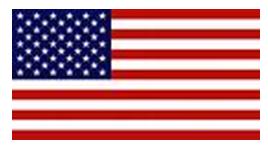Have You Pull-Started Your 'Me 262' Lately?
 Monday, February 9, 2009 at 09:15PM
Monday, February 9, 2009 at 09:15PM  Screenshot from 'Flight Check Fighters' video
Screenshot from 'Flight Check Fighters' video
Maybe this pic doesn't strike you the way it does me... but a guy pulling a handle on a rope that's attached to something inside the engine on an Me 262 definitely makes me go, hmmm (out loud).
Let's back up a minute here. Since my dad passed away recently, I've been going thru boxes of stuff he'd accumulated over the years. In a recent box, I found a 2 DVD set from 2007 titled ‘Flight Check Fighters' - ‘The How-To-Fly Series' that's available from TimelessVideo.com. These 2 DVD's have tons of actual footage from military training films that show you about everything you need to know to properly fly the P-38, P-39, P-40, P-47, P-61, and the Me 262. It's a great set that you should seriously consider adding to your collection.
It was the Me 262 that caught my eye on the package right away. So I tossed the DVD in the computer and start watching an actual German training film on the first jet aircraft to go into service in WWII. Cool stuff.
I'm just watching away thinking this is pretty amazing to see (and I'm thinking, wow, the crazy mechanical nightmare that were the aircraft from that era!). After a bit, an instructor is showing a student about the throttles and engine controls when a third guy walks up and grabs a handle on a rope located right at the hole in the bullet in the middle of the nacelle. Then, he starts yankin' on it! I'm thinking, what the heck?! Is this some kind of crazy pull-start pre-rotator for the compressor? What in the world is he doing?
 Delaware Valley Historical Aviation Association Museum - Horsham, PA. Photo: http://www.williammaloney.com/
Delaware Valley Historical Aviation Association Museum - Horsham, PA. Photo: http://www.williammaloney.com/
 <Air Victory Museum - Lumberton, NJ
<Air Victory Museum - Lumberton, NJ
Photo: http://www.williammaloney.com/
Well, my friend ‘Mr. Google' helped me out... and I found out something very interesting. Seems the Germans engineered a small 10hp 2-stroke 2-cylinder gas engine into the nacelle to use as the starter for the turbine when a ‘cart' wasn't available!
So, the guy is actually pull-starting that little gas engine, which then spins the compressor enough to fire up the turbine engine. I think that's just cool, crazy, and topped off with more cool! I never knew the Me 262 was really a 4 engine, turbine/2-stroke hybrid! Also very interesting to note that these early turbines had a TBO of only about 25 to 50 hours! Ouch!
The upper picture above shows a 2-place version of the Me 262 from the Delaware Valley Historical Aviation Association Museum in Horsham, PA. This beautifully restored aircraft makes it easy to see the pull ring in the center of the nacelle, and the 2-stroke is nestled inside the 'bullet'.
The lower pic is from the Air Victory Museum in Lumberton, NJ and shows the little Riedel 2-stroke engine on the front end of a Junkers Jumo 004 engine (with the center ‘bullet' removed). Apparently this 2-stroker could be started from the cockpit via electrics, and the pull start option was for back-up. The large 'pull' ring is clearly visible here. Looking close at the 2-stroke engine design, and the compressor blades behind it, it's fascinating to see how little has changed in 65 years. Materials and details have improved greatly, but the basic concepts are very similar.
Pretty stinkin' cool stuff all the way around. Just goes to show that you never know what you don't know! Keep this in mind the next time you're at a sweet aviation museum. Dig a little deeper into the displays cuz you just don't know what cool tidbit is just waiting for you to discover : )
 Martt |
Martt |  3 Comments |
3 Comments |  German,
German,  WWII,
WWII,  me-262,
me-262,  military
military  Email Article
Email Article 













































































Reader Comments (3)
I just learned about the "pull-start jet" today! Makes perfect sense. Fascinating!
Knew about this years ago I'm pretty sure from a reprint of a Me-262 operators manual
that was originally made for the plane here in the U.S. in 1946. The plane was given
to us voluntarily by a German pilot who wanted to leave the German air force and in
doing so, him or his family members would not suffer any repercussions for the act of doing it because they were in U.S. held territory.
Knew about this years ago I'm pretty sure from a reprint of a Me-262 operators manual
that was originally made for the plane here in the U.S. in 1946. The plane was given
to us voluntarily by a German pilot who wanted to leave the German air force and in
doing so, him or his family members would not suffer any repercussions for the act of doing it because they were in U.S. held territory.